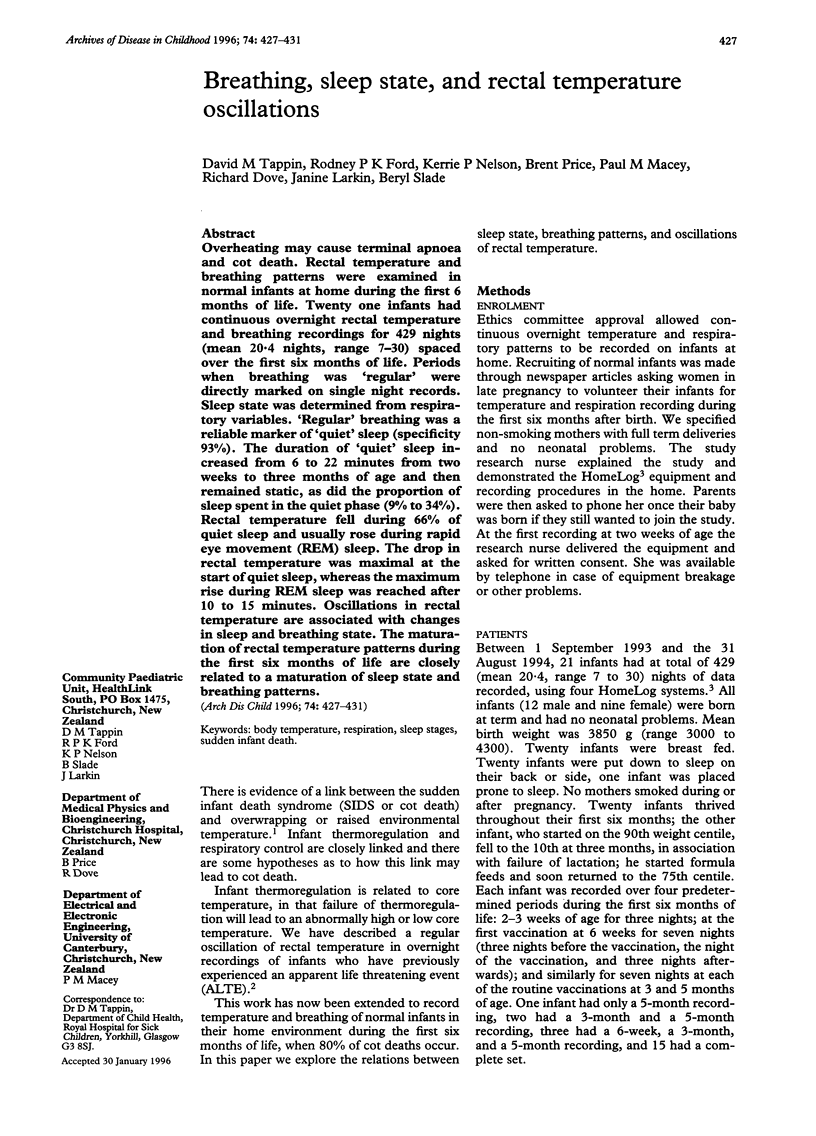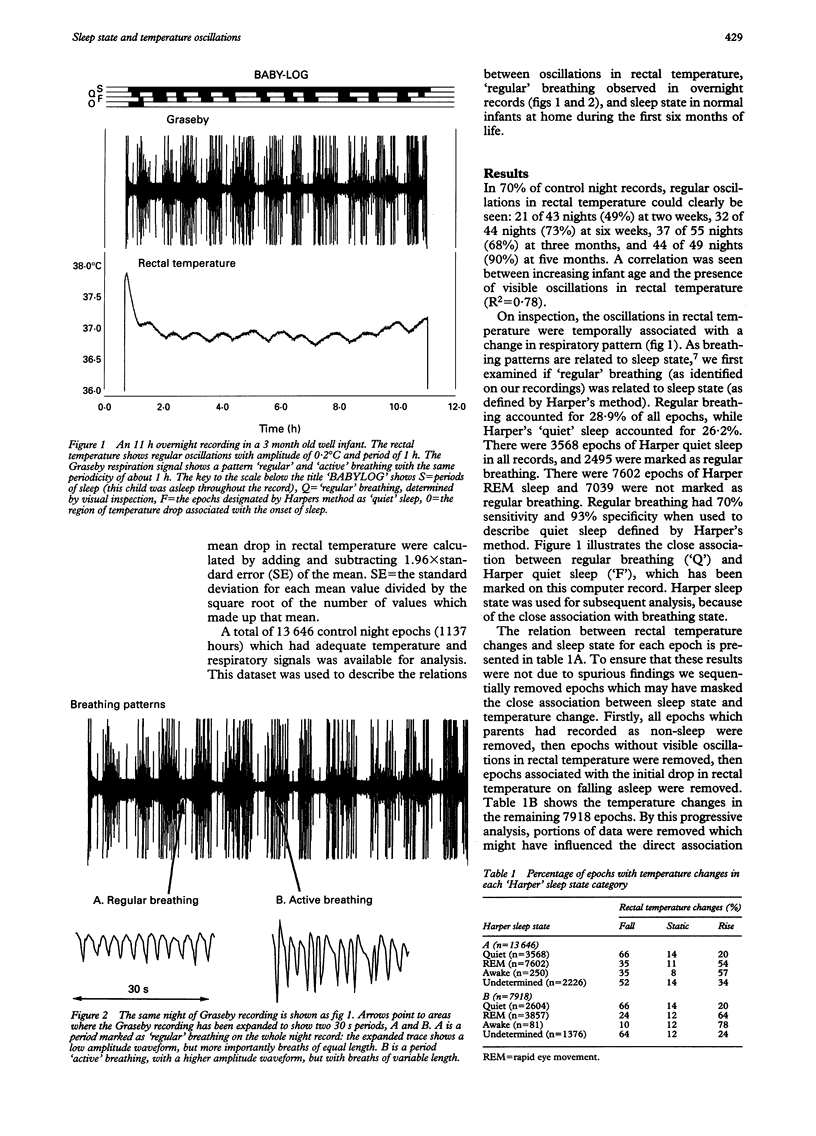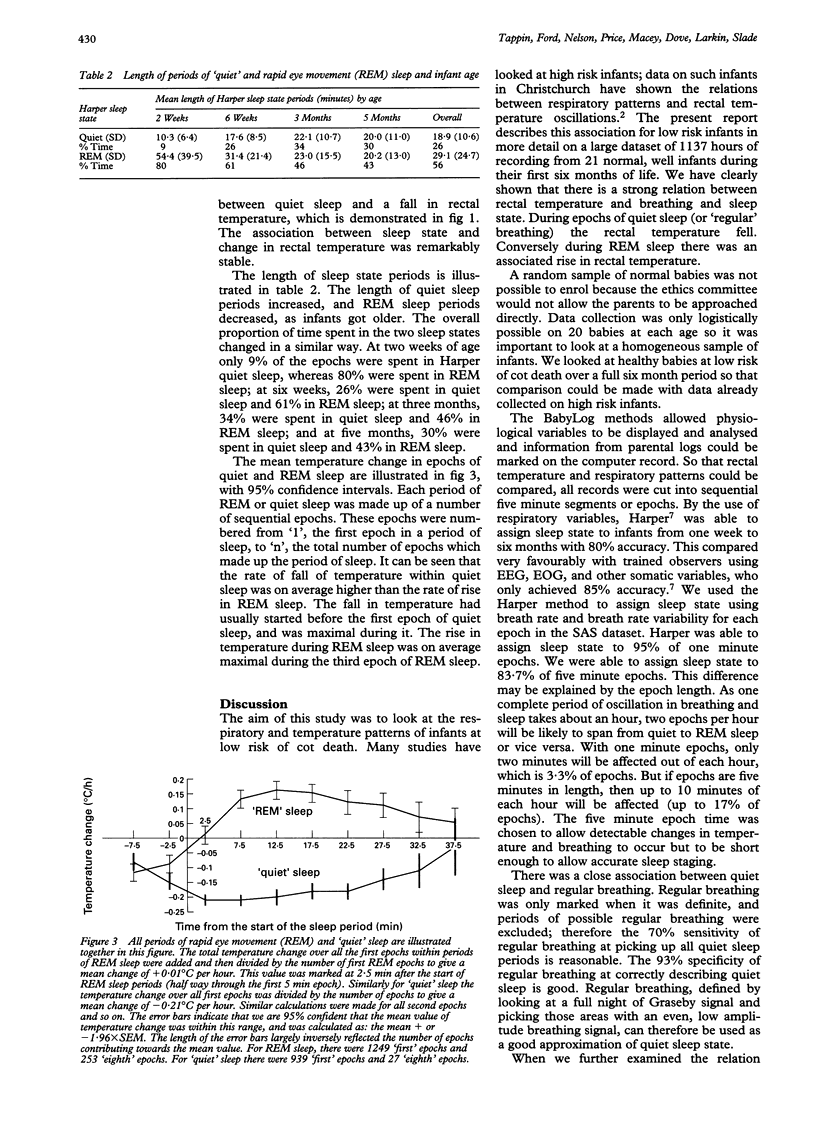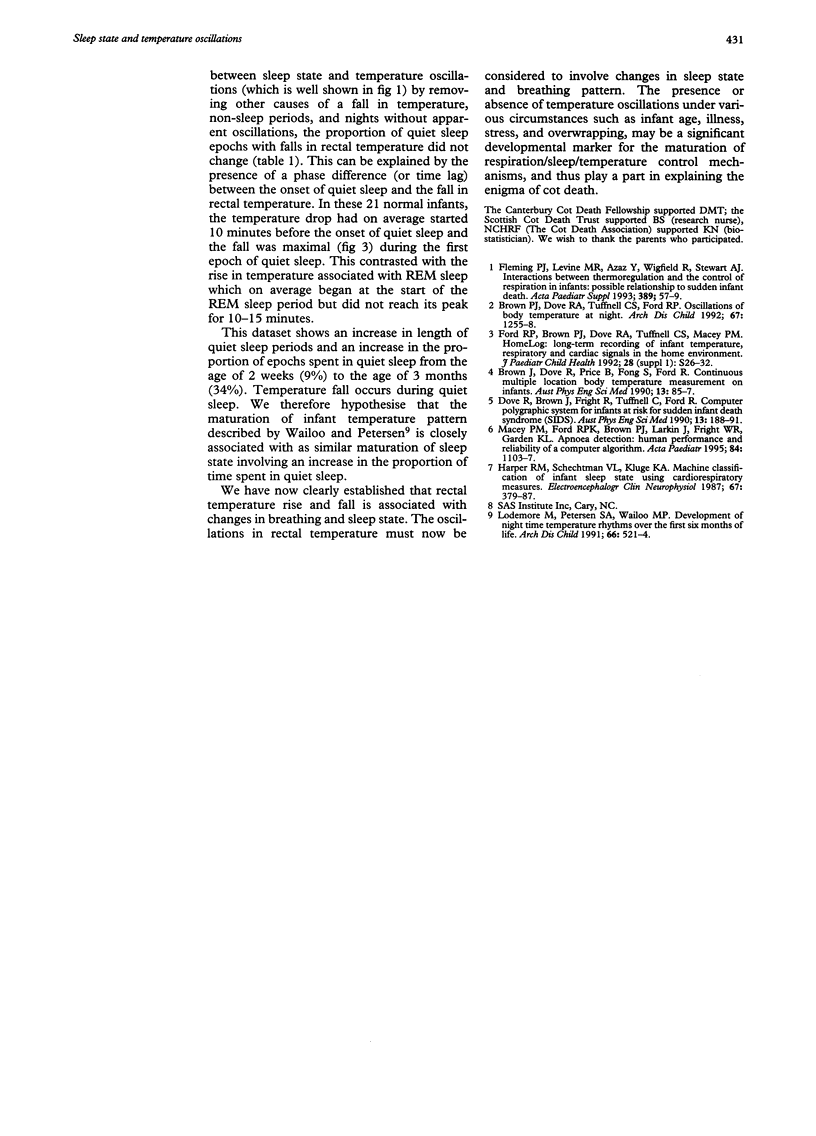Abstract
Overheating may cause terminal apnoea and cot death. Rectal temperature and breathing patterns were examined in normal infants at home during the first 6 months of life. Twenty one infants had continuous overnight rectal temperature and breathing recordings for 429 nights (mean 20.4 nights, range 7-30) spaced over the first six months of life. Periods when breathing was 'regular' were directly marked on single night records. Sleep state was determined from respiratory variables. 'Regular' breathing was a reliable marker of 'quiet' sleep (specificity 93%). The duration of 'quiet' sleep increased from 6 to 22 minutes from two weeks to three months of age and then remained static, as did the proportion of sleep spent in the quiet phase (9% to 34%). Rectal temperature fell during 66% of quiet sleep and usually rose during rapid eye movement (REM) sleep. The drop in rectal temperature was maximal at the start of quiet sleep, whereas the maximum rise during REM sleep was reached after 10 to 15 minutes. Oscillations in rectal temperature are associated with changes in sleep and breathing state. The maturation of rectal temperature patterns during the first six months of life are closely related to a maturation of sleep state and breathing patterns.
Full text
PDF




Selected References
These references are in PubMed. This may not be the complete list of references from this article.
- Brown P. J., Dove R. A., Tuffnell C. S., Ford R. P. Oscillations of body temperature at night. Arch Dis Child. 1992 Oct;67(10):1255–1258. doi: 10.1136/adc.67.10.1255. [DOI] [PMC free article] [PubMed] [Google Scholar]
- Dove R., Brown J., Fright R., Tuffnell C., Ford R. Computer polygraphic system for infants at risk for sudden infant death syndrome (SIDS). Australas Phys Eng Sci Med. 1990 Dec;13(4):188–191. [PubMed] [Google Scholar]
- Fleming P. J., Levine M. R., Azaz Y., Wigfield R., Stewart A. J. Interactions between thermoregulation and the control of respiration in infants: possible relationship to sudden infant death. Acta Paediatr Suppl. 1993 Jun;82 (Suppl 389):57–59. doi: 10.1111/j.1651-2227.1993.tb12878.x. [DOI] [PubMed] [Google Scholar]
- Ford R. P., Brown P. J., Dove R. A., Tuffnell C. S., Macey P. M. HomeLog: long-term recording of infant temperature, respiratory and cardiac signals in the home environment. J Paediatr Child Health. 1992;28 (Suppl 1):S26–S32. doi: 10.1111/j.1440-1754.1992.tb02728.x. [DOI] [PubMed] [Google Scholar]
- Harper R. M., Schechtman V. L., Kluge K. A. Machine classification of infant sleep state using cardiorespiratory measures. Electroencephalogr Clin Neurophysiol. 1987 Oct;67(4):379–387. doi: 10.1016/0013-4694(87)90126-x. [DOI] [PubMed] [Google Scholar]
- Lodemore M., Petersen S. A., Wailoo M. P. Development of night time temperature rhythms over the first six months of life. Arch Dis Child. 1991 Apr;66(4):521–524. doi: 10.1136/adc.66.4.521. [DOI] [PMC free article] [PubMed] [Google Scholar]
- Macey P. M., Ford R. P., Brown P. J., Larkin J., Fright W. R., Garden K. L. Apnoea detection: human performance and reliability of a computer algorithm. Acta Paediatr. 1995 Oct;84(10):1103–1107. doi: 10.1111/j.1651-2227.1995.tb13505.x. [DOI] [PubMed] [Google Scholar]


